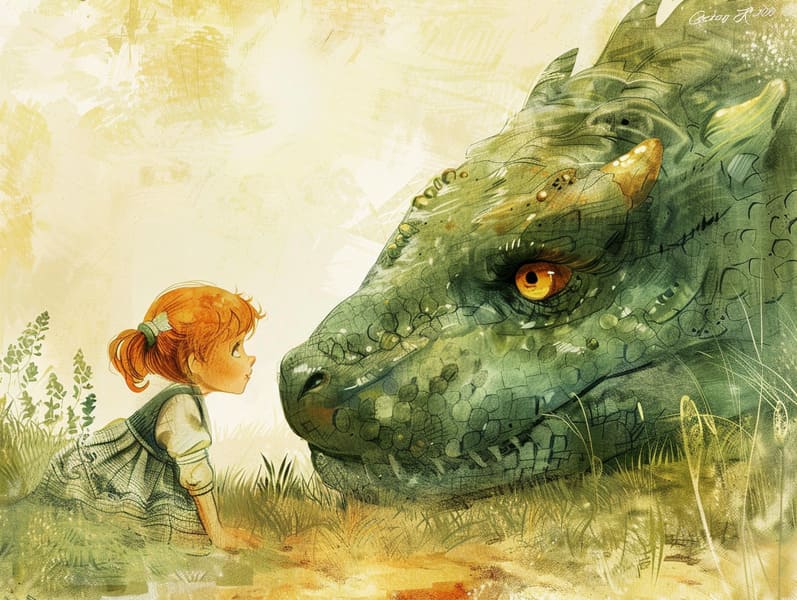The Story Behind Legendary Fairy Tales and the Enduring Captivation.
The Story Behind Legendary Fairy Tales and the Enduring Captivation.
Blog Article

Best fairy tales have old origins. These tales have been whispered from one generation to the next far before they were ever written down. They came from a variety of traditions, including African traditions. They were initially shared among adults, often carrying themes and messages reflective of the societal norms and beliefs of the time.
The Grimm brothers, the two Grimm brothers, were among the first to compile many of these beloved tales. Their compilation, "Grimm's Folk Tales," included narratives like "Cinder Maid," "Hansel and Gretel," and "Snow-White and Rose-Red," which have since become staples in the world of traditional fairy tales. Similarly, Hans Andersen's delightful tales, such as "The Sea Maid," and "The Story of the Ugly Duckling," have enchanted hearts worldwide, ensuring their place in the pantheon of beloved fairy tales.
Though they are old, these tales remain as important as ever, especially as children's bedtime stories. These delightful tales are now available in various formats, including colorful picture books, captivating animations, and free fairy tales online.
Their ongoing significance can be linked to several captivating elements:
Vital Lessons: Traditional fairy tales often illustrate important moral lessons. Fairy tales like "The Boy Who Cried Wolf" teach the significance of honesty, while "The Race of the Tortoise and the Hare" point out the virtues of persistence and modesty. These narratives offer the young clear distinctions between right and wrong, shaping their moral compass in a mild yet deep way.
Compassion and Insight: Traditional fairy tales frequently feature heroes facing difficulties and adversities, inciting audiences to identify with their struggles and support their triumphs. For instance, "Beauty and Her Beast" shows us the virtue of valuing inner qualities to understand the inner self of a person, building compassion and perception.
Cultural Perception: Many ancient fairy tales are deeply embedded in the cultural contexts from which they sprang. Discovering these tales can provide delightful insights into different ways of life, developing a sense of world awareness and knowledge.
Inventiveness and Imagination: The whimsical elements in traditional fairy tales—mythical entities—encourage children’s fantasies. These stories take readers to fantastical realms, engendering inventive thinking and a sense of delight that lasts a lifetime.
Classic fairy tales are not only charming but also illuminating. They serve as alluring tools in building various brain and heart skills in little ones. When traditional fairy tales are voiced, they improve language proficiency by showing new lexicon and intricate sentence structures. This practice also promotes auditory perception and mindfulness, as kids pay close attention, excited to see what happens next.
Furthermore, examining the themes and characters of timeless fairy tales can develop critical thinking and cognitive skills. Little ones are guided to see patterns, anticipate outcomes, and figure out cause and effect. These talks also encourage young readers utter their thoughts and feelings, contributing to their emotional intelligence.
In today’s electronic age, the abundance of web-based fairy tales has made these tales more acquirable than ever. Internet resources and online apps provide wide arrays of timeless fairy tales that can be looked at or played anytime, anywhere. Fairy tales read aloud are particularly well-liked, giving an enjoyable way for the young to relish these charming tales. Read-aloud stories get more info and read-aloud videos bring characters and settings to life, often augmented by fantastical musical scores and melodies that elevate the tale experience.
The timeless appeal of ancient fairy tales lies in their ability to transform to today's society while continuing with their essential themes. Contemporary versions of these fairy tales often incorporate more representative figures and modern settings, making them meaningful to today’s audience. However, the core values of bravery, kindheartedness, and fair play remain unchanged, continuing to impact children of all ages.
Classic fairy tales also offer a sense of peace and predictability. They offer a methodical narrative with a evident beginning, middle, and end, often closing with the wrap-up of conflicts and the triumph of honesty over deceit. This consistency can be calming for little ones, rendering a sense of reliability in an shifting world.
Timeless fairy tales continue to captivate and teach new generations, maintaining their fascination and significance in modern society. As kids' bedtime tales, they make accessible a perfect blend of charm and understanding, developing moral values, empathy, and creativity. The prevalence of internet fairy tales and the sought after status of fairy tales spoken ratify that these traditional narratives remain obtainable to new generations.
By defending and conveying these stories, we continue to praise the rich tapestry of inventiveness and cultural heritage. Whether you are delving into a vibrantly illustrated book, seeing a internet library, or playing an voice book, the spell of popular fairy tales is always within reach. These stories remind us of the unchanging influence of narratives and its ability to unify us across generations and cultures.
Be it you are browsing a gorgeously illustrated book, enjoying a web collection, or listening through an read-aloud book, the wonder of bedtime fairy tales is always within reach.
These narratives demonstrate of the enduring power of fairy tales and its ability to connect us across generations and cultures, weaving a spell that captivates and teaches alike.